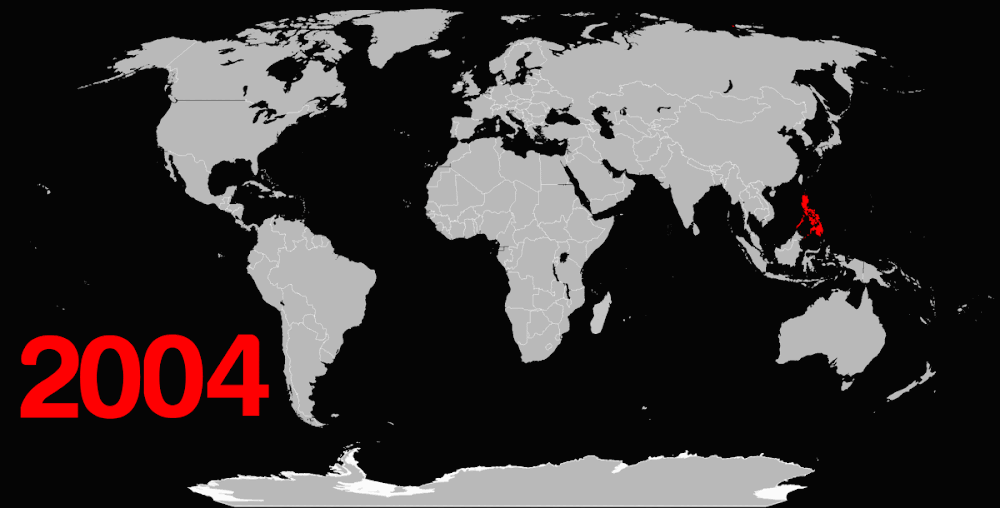♣♣♣♣/♣♣♣♣♣
Self-exiled “Panther of Philippine Letters” Crispin Salvador is found lifeless and floating on the Hudson River. His untimely death is met with nonchalance back in his native Philippines, quickly dismissed as a suicide by both his detractors and rivals alike. The investigators arrive at the same conclusion, but not everyone is convinced. One of those with doubts is Miguel, his protégé at Columbia who has become more than a close acquaintance through the years. The plot thickens when the student receives an email, presumably from his recently deceased mentor, asking him to fly back to Manila to find his daughter Dulcinea who might just be in possession of his unfinished obra maestra, a manuscript with the working title “The Bridges Ablaze” that promises to expose prominent figures back home. As Miguel deplanes, he is confronted not just by the quest for finding his teacher’s estranged daughter, but also by the life he has decided to leave behind when he decided to settle in New York.
Is the death involved here real or simply metaphorical? Is this novel just one of those self-jerk pseudo-autobiographies manifested in the form of narrative prose? Does Crispin have multiple personality disorder? This is where the fun speculations begin as you draft some possible sellout plot twists in your head, if you have the patience to sift through the book’s 304 pages, that is. It would be a lie to say that it was easy for me to do so, because the way this novel is structured is just so inconvenient, basically a messy literary bricolage, which is unsurprising since word has it that this served as Syjuco’s PhD dissertation.
The chapters are a hodgepodge of paragraphs in diverse fonts meant to distinguish among the many articles, interviews, and snippets of Crispin Salvador’s published body of work, all meant to develop a character in absentia. This is joined down the line by interviews with people who knew the guy, and through those accounts we end up getting a disjointed picture of the subject matter despite his early exit in the book’s prologue. The constantly changing fonts are a direct affront to the senses, which just adds to the already chaotic structure of the plot.
The materials are diverse, some of which: YA novel chapters about a kid named Dulce who befriends supernatural entities of Philippine lore; excerpts from Crispin’s autobiography recounting the exploits of his clan headed by a landed Spanish immigrant; and a running gag about the life of an AMA student told through recycled lowbrow jokes you have already read elsewhere many times before. While some of them prove to be essential in introducing the life of a dead character through his written work, many of them just digress from the main plot, which develops at a rather glacial pace.
Halfway through the novel the parallels between the lives of Crispin, the subject of the story, and Miguel, our anchor in it, start to mirror each other too suspiciously for all of it to be mere coincidence. After all, aren’t we dealing with writers here? The dead guy is a writer. The guy investigating the death of the dead guy is a writer. The author who also goes by the name Miguel is also a writer. Miguel the acolyte even openly admits in one chapter that the conversation he had with a person on the plane did not really take place, something he just pulled off for narrative convenience. In short, how reliable are these writers?
Rest assured that the ending involves a decent twist for a debut attempt from a newbie novelist. The question here is, is it worth it, though? After all, you have to go through those 300 pages of incoherent write ups and stream of consciousness narrations to get to that epilogue. Luckily, what the novel lacks in storyline, it makes up for through its not so veiled critique of Philippine society and politics as well as the dilemma of being an English writer or novelist in a country where the go-to popular forms of written prose for the masses are Precious Hearts Romance novels and self-deprecating novellas in the vernacular.
Eventually, Miguel the author just ends up in similar circumstances with his characters by coming up with a novel about Filipinos instead of for them. It is left for the appreciation of a western audience who have no real stakes in the country’s socio-political realities. Perhaps this is also the reason why most reviews from locals are in unison in deeming Ilustrado as pretentious. To some extent, it does come across as such. As a narrative, it could’ve been more exciting, had the author tackled it in a more cohesive and less gimmicky way.




_poster.jpg)



0 creature(s) gave a damn:
Post a Comment